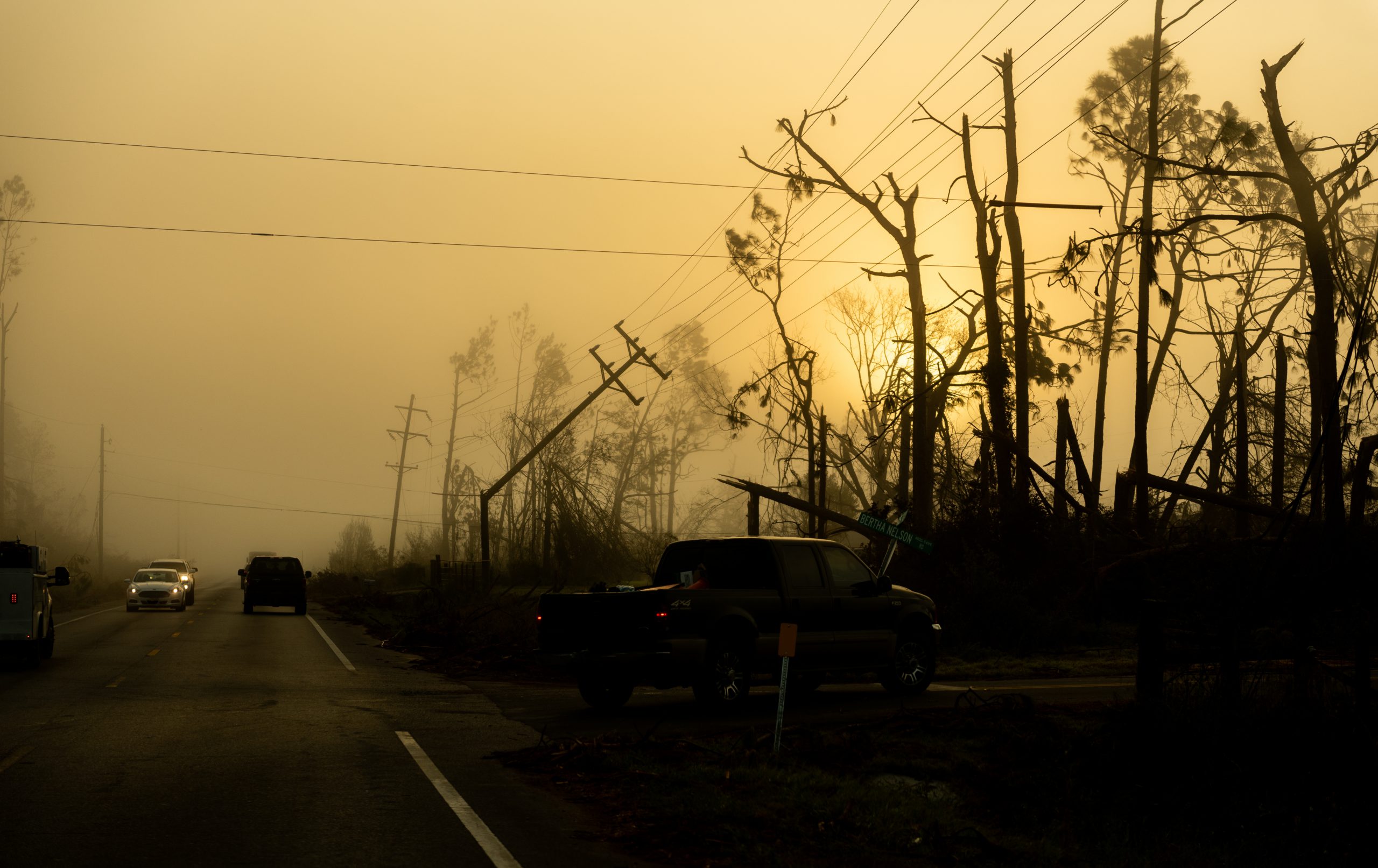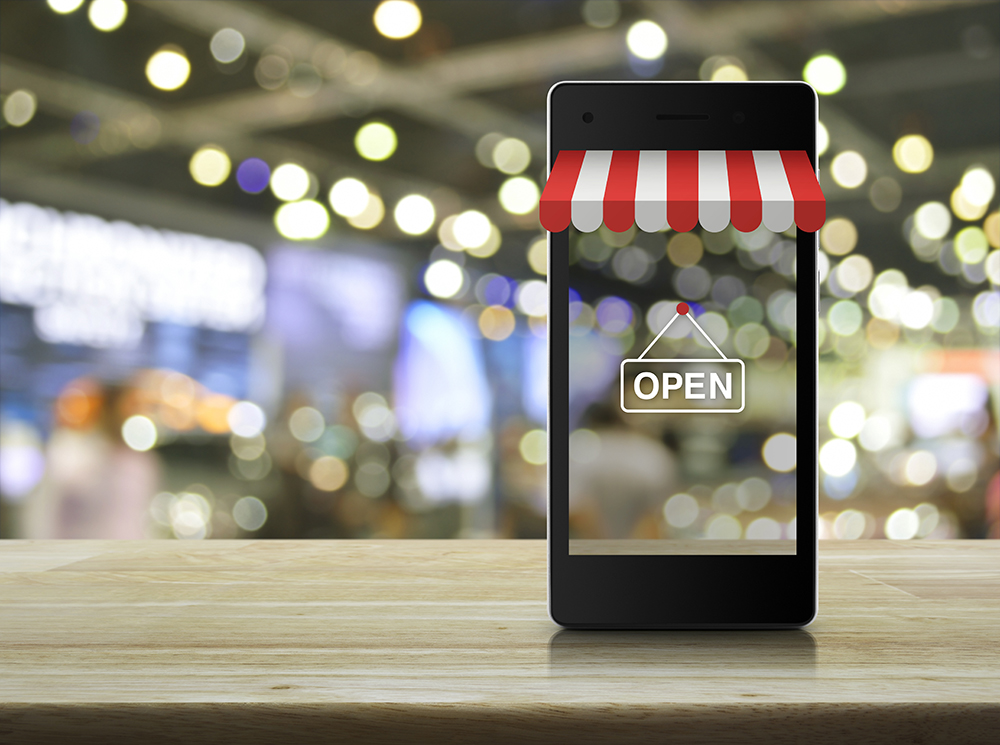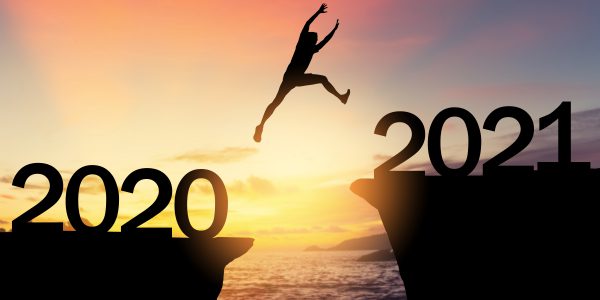President’s Message: The Butterfly Effect
Sometimes amidst all the noise, turmoil, and vitriol that seemingly bombard us endlessly, it can be difficult to pause and remember what’s truly important in life. And sometimes, that reminder can come in very unexpected ways.
Recently, I have been reminded of how our individual actions, albeit small at the time, can have a ripple effect on others without us even knowing it sometimes.
Thinking about this phenomenon reminded me of a lesson my mom used to teach us called “the butterfly effect.” So it goes, “an act as small as the flutter of a butterfly’s wing can create a tsunami on the other side of the world.” (My mom always said she would come back as a butterfly—how fitting.)
The butterfly effect has become a common metaphor for how small, seemingly insignificant moments can alter history and shape destinies and how some ostensibly inconsequential acts or gestures can profoundly impact others and, therefore yourself.
Recently, this lesson was reaffirmed once again in the most unexpected way.
Inspired by my children, I penned a letter on social media questioning if one person’s voice could make a difference. The overwhelming response triggered a very unexpected series of events, new acquaintances, and unique experiences I would never have imagined. Two years later, that tsunami of events is still moving and growing and has ignited in me a passion for continuing to foster it.
This journey has led me to cross paths with and meet some incredible folks doing remarkable work. I have also had the opportunity to meet and mentor some extraordinary young people. Together, we have worked to help bridge differences and open up candid conversations among a diverse group of people, a focus that has become critical in today’s environment and extremely rewarding.
I am astonished as I sit back and think about how that one superficially small action has sparked so much positive momentum. I see the impact it has had on others and felt its effect on me.
So, if you, like me, ever sit back and wonder if you can make a difference in someone’s life, your community, industry, or workplace, you absolutely can. Every one of us has the power to impact our surroundings. Just start with one small thing, one action, or a nice gesture.
As my mom would say, go out and flap your wings! Because as the butterfly effect goes, you just may cause a tsunami of kindness, generosity, or joy in someone else’s life. You never know where that tsunami may lead.
President’s Message: A Healthy Prognosis for Healthcare Real Estate
The healthcare industry has rapidly evolved over the last few years. Having broad access to quality healthcare, both physical and digital (e.g., telehealth), has become critically important, and healthcare providers are creating innovative ways to deliver their products and services to their clients in the most efficient way possible.
Healthcare service providers are making deliberate decisions on how and where to establish physical locations to meet customer demands, with access, convenience, and wellbeing top among those factors. We’re seeing more and more healthcare services shifting away from traditional hospital campus settings and emerging in local neighborhoods. Healthcare providers are taking a cue from the retail playbook by establishing multiple, well-situated locations within a community, increasing the number of entry portals within their respective networks while also exploring different facility configurations to enhance the customer experience.
We can expect to see more digital integration into the healthcare landscape like telehealth options and patient monitoring technology, self-check-in kiosks in waiting rooms (or no waiting rooms altogether), and even drive-thru options. Of course, all these new and emerging concepts will require strategic real estate planning and partnerships.
At Stirling Properties, we are adapting to the changing healthcare environment. While the demand for healthcare services continues to grow and transform, so are our service lines to meet those respective needs. As part of our company’s strategic growth plan, we have expanded into new real estate sectors with a translatable skill set which has added value and diversified our commercial portfolio. Here are a few of our recent projects:
- Development: A 20,000-square-foot freestanding Emergency Room & Imaging Services clinic in LaPlace, LA, based on a 20-year lease to Ochsner Clinic Foundation;
(4) Ochsner Kidney Care clinics in the GNO area, averaging 7,000 square feet, through a joint venture of Ochsner Health and National Renal Care (NRC); the conversion of a former retail building into a 25,000-square-foot multispecialty clinic in Bossier City, LA, in partnership with Ochsner-LSU Health System of North Louisiana (OLHSNL); Tammany Cancer Center in Covington, LA, a 75,000-square-foot, state-of-the-art facility in partnership with Ochsner and St. Tammany Health System; and Ochsner Medical Complex – The Grove in Baton Rouge, LA, a 210,000-square-foot medical center, including a five-story, 180,000-square-foot medical office building, and a 30,000-square-foot ambulatory care center. - Acquisition & Financing: We partnered with Ochsner Health System to refinance a $59.8 million newly built 129,875-square-foot rehabilitation hospital in Jefferson, LA; and we acquired and managed the renovation of the shuttered 205,000-square-foot Louisiana Heart Hospital in Lacombe, LA, into a Post-Acute Care Hospital with Ochsner Health System and its local partners, St. Tammany Parish Hospital and Slidell Memorial Hospital.
- Facilities Management: Stirling Properties manages Mary’s Medical Center in Shreveport, LA, a 730,000-square-foot, multi-story medical complex. Over the past three years, this virtually vacant campus has been repurposed to include neurosurgery, neurology, a pediatric specialty clinic, an OBGYN clinic, and training rooms.
- Leasing/Redevelopment: We work with several prominent healthcare providers to locate and re-lease dormant retail spaces with distinctive healthcare services. Current projects include a regional health and wellness club in Harahan, LA; a pediatrics clinic at River Chase in Covington, LA; a behavioral & women’s health clinic at Oakridge Place in Metairie, LA; a Restore Hyper Wellness clinic at Premier Centre, in Mandeville, LA; and regional tenant rep for JenCare Senior Medical Center; among many others.
Our team has learned to adapt to the diverse needs of our healthcare clients, which include Ochsner Health System, LSU Health, St. Tammany Parish Hospital, Our Lady of the Lake, Baton Rouge General, and many more. We have tailored our real estate services so that whether our role is advisory, development & redevelopment, site selection, master planning, brokerage & lease negotiation, entitlements, financing, design & construction management, or asset & property management, our healthcare real estate team can assist.
The healthcare industry will continue to expand and evolve in the future, but it goes much further than simply keeping our communities healthy; it’s serving as an economic driver. Healthcare has become the reason why people and companies choose to locate/relocate in a particular area or region. Much like parents look to live in areas with good school systems, access to quality healthcare is equally important. Healthcare is also a significant job creator—one of the largest employers in the U.S.—and not just for medical providers, doctors, and nurses. Healthcare employs IT professionals, technicians, construction jobs, and maintenance providers—everything from landscaping to HVAC techs to cleaning services. The greatest need for the healthcare industry is a trained workforce and labor market.
The prognosis for the healthcare industry unquestionably looks healthy moving forward, both from a real estate and economic development perspective. Businesses and communities that can adapt to take advantage of the resulting opportunities will reap the benefits.
President’s Message: Together, we prospered
We’ve undoubtedly experienced challenging times over the past two years, but through it all, we not only persevered but rather we got stronger and better as a company and as a team. As a result, I’m proud to report that Stirling Properties emerged from 2021 with a record year!
Our success did not happen by accident, but rather because of the groundwork we’ve laid over the years—hard work, the solidarity and strength of our team, and our culture.
Take a look at some of our impressive results over the last couple of years. These were all accomplished with the collective effort of our entire team.
President’s Message: No More Kicking the Can
We’re a little more than two weeks past the landfall of Hurricane Ida and slowly, slowly returning to some sense of normalcy. Yet, many are still struggling to recover. I want to thank everyone who called, texted, emailed and checked in on us over the last couple of weeks. Your outpouring of support and encouragement is very much appreciated. We extend our thoughts and prayers across the country to all those affected by this storm and the devastation it left behind.
Hurricane Ida is tied with Hurricane Laura (2020) as the strongest storm to ever hit Louisiana, with sustained winds over 150 mph, and it was the fifth-largest storm ever to hit the U.S. (in terms of category strength). Needless to say, our region sustained severe impacts from this storm—ironically, 16 years to the day after Hurricane Katrina devastated the Gulf South.
Hurricane Ida was primarily a wind event that downed power poles by epic proportions and destroyed entire electric grids, crippling our people and their recovery efforts. More than one million customers lost power. Over 30,000 power poles were downed—almost double that of Hurricane Katrina—and some electricity, internet and cellular outages will possibly continue through the end of September. To many, destruction to the power grid system, in this case, was equally as destructive as Hurricane Katrina’s floodwaters, which further highlights the weaknesses that persist in our national disaster response efforts.
As always, I am tremendously proud of the responsiveness of our Stirling Properties team. Even amid their own challenges and losses, our team stepped up to take care of each other and our properties. We’ve witnessed this many times over the past year and a half. Our team members pitched in to help those affected by Hurricane Laura in Lake Charles last year, Hurricane Sally that hit Mobile/Pensacola, and now, they have volunteered, raised funds and brought much-needed supplies to our area.
- We were able to secure fuel tanks and distribution points to provide much-needed gasoline for generators in areas where fuel was impossible to find.
- We kept in constant contact with our folks in impacted areas and continue to update and monitor individual circumstances. In some cases, we helped line up vendors for mitigation efforts, tree/roof damage, and other needs.
- In addition, we assisted our healthcare partners at Ochsner New Orleans, to secure toiletries and basic needs items for their frontline staff working through the storm and the ongoing COVID-19 surge.
- We helped Xavier University line up temporary remote educational space in our conference center at the Pan-American Life Center in New Orleans.
- Our Mobile/Pensacola team raised and delivered over $10,000 in cash, gift cards and donated supplies to residents of lower Jefferson and Lafourche Parishes, who were hit especially hard during the storm and still do not have power restored.
On the property side, our team was equally responsive in getting on-site quickly and working to mitigate damage to our impacted properties. Some team members were first to respond or even camped out at properties to ensure their safety and continuity. One of our most severely affected properties was Westpark Self Storage in Houma. The facility still has no power and received significant wind and water damage to the building and storage units. Our team has been on-site 24/7, working with customers who have lost their personal belongings. Ironically, another property that received storm damage was one we just acquired the week before, a Pepsi Distribution Center in Livingston, LA, that incurred significant roof damage and water intrusion. Our team worked diligently to install a temporary roof, minimize damage and get the facility back in operation. Many other properties sustained minor damage, but overall, we were very fortunate.
What lessons can we learn from this? What do we take away from this type of widespread destruction? First, our infrastructure failed; and it’s not the first time. The infrastructure across our entire country is highly vulnerable to both natural and man-made disasters, like security threats. A weak infrastructure not only jeopardizes our economy and business continuity but our safety and security as a whole, as evidenced by events all over the country that are happening more and more frequently. Our businesses, financial markets, logistics systems, and even our lives rely on a solid infrastructure system. And when it fails, we all suffer.
In my opinion, it is past time to get serious and make significant investments in our infrastructure. We lag way behind other countries in this area. Our country’s infrastructure needs 20 years ago were much different than today with the advancements of power grids, broadband, water and gas. Therefore, our infrastructure support system and response efforts need also to evolve to remain relevant. In juxtaposition, the COVID-19 pandemic forced the whole country to work remotely, and we were successful in business continuity—but other natural disasters that cripple our infrastructure hinder our progress and set us back even further.
Following Hurricane Katrina, a $14 billion infrastructure investment for flood protection was made in our region, and it worked. Now, power grids and support should be a priority—not just locally but nationally. Unfortunately, upgrades to our infrastructure have been kicked down the road for far too long. I understand the hesitancy in making such large-scale decisions and spending bills; however, the political football of infrastructure investments must end.
I support the bipartisan Infrastructure Investment and Jobs Act (H.R. 3684) cosponsored by Senator Bill Cassidy (Louisiana), making substantial investments in roads, bridges, ports, airports, electric grids, water systems, broadband and coastal resiliency. This $1.2 trillion bill will significantly aid Louisiana and our current recovery efforts and help prepare others across the country for future disasters. The Senate recently passed this infrastructure bill and now goes to the House. While I understand there is another larger proposed infrastructure bill, perhaps our elected officials can meet somewhere between…and quickly. But doing nothing is no longer an option. No more kicking the can; no more political football.
I encourage you all to contact, call or write your Representative in Congress to support this vital legislation that will literally pave the way for a better, brighter future for us all.
Learn more about the Infrastructure Investment and Jobs Act (H.R. 3684).
President’s Message: The Collision of Physical and Digital Retail
For quite some time now, you have undoubtedly seen the exaggerated headlines about the death of brick-and-mortar retail. How ecommerce—led by Amazon—would put physical stores out of business. How ironic is it now that these digitally native retailers are aggressively moving into the brick-and-mortar world?
In fact, Amazon is very bullish on opening new physical stores in all its various formats (Amazon Grocery, Whole Foods, Amazon Four Star, Amazon Books, etc.). And conversely, while Amazon is adding new stores, traditional brick-and-mortar retailers are determinedly expanding and beefing up their ecommerce platforms as well. Why? Because it provides multiple avenues and touchpoints to engage with and satisfy the demands of the consumer. It’s like two trains coming from different directions colliding in the same retail space.
We’ve already seen many physical changes occurring in brick-and-mortar retail stores as a result. Retailers and retail property owners are shifting away from the one-size-fits-all model and curating more personalized and experiential environments, a change that has been occurring for quite some time. Consumer safety features, BOPIS (buy online, pickup in-store), curbside pickup and expedited pickup zones for fast-casual restaurant establishments have all become the norm, even consumers’ expectations.
Retail real estate has certainly evolved over the years, but those who believed that brick-and-mortar stores were dying failed to understand consumers’ behaviors and preferences. Sure, specific retail formats and retailer stores have or will die, but overall, brick-and-mortar retail is healthy and here to stay. The onslaught of the COVID-19 pandemic further accelerated trends that were already beginning to occur and even proved that some types of retail are actually essential to consumers. The COVID crises also confirmed that retail centers are more than just for shopping. They offer healthcare services, wellness clinics, fitness, entertainment, community gathering places and social connectivity—all things digitally-native brands are now trying to capitalize on.
Moving forward, retail centers will only play a more critical role in everyday living and bringing communities together, and retailers must recognize and adapt to their role in this transformation. So, what can we expect to see for the future of retail?
- Rapid expansion of those retailers that have emerged as the winners. Grocery stores (value, ethnic and specialty) are performing exceptionally well and remain attractive tenants in retail centers. Off-price players, fitness, healthcare and digitally native brands will grow substantially.
- Constant and substantial physical changes to retail centers. Retailers will continue to alter store sizes and formats to adapt to consumer demands, such as convenience and safety (some may be larger, some smaller), more convenient front-of-store operations for customer pickup and quick product collection.
- Enhanced online ordering systems, technology integration and expedited pickup zones for fast-casual restaurants.
- Activation of common areas and outdoor spaces for restaurant and dining uses, entertainment, community events, and social gathering places.
- Emerging new retail and food concepts (e.g., food kitchens).
- Creative ways for retailers to use data mining and tech advancements to better engage with and attract customers into the physical store.
- Continual incorporation of brick-and-mortar in the supply chain as more stores are utilized as distribution and fulfillment spaces.
Brick-and-mortar retail is definitely not dead, but it will continue to evolve and transform at a rapid pace—and the collision of physical and digital uses of retail space will drive most of this transformation.
Understanding the implications of these changes and being ready and able to adapt will be critical for retail owners and operators. And, for those able to do so, there will be many opportunities in the future.
As the physical and digital retail worlds continue to collide, retailers and property owners will be forced to get on board or get crushed!
President’s Message: Lessons Learned
As midnight approached on December 31st and the end of the year was in sight, there were all sorts of GIFs, memes and messages circulating, illustrating how anxious we were to finally close the door on 2020. The whole world was exhausted and eager to move on.
But I believe before we slam that door on 2020 and block it from our memories, we should take a moment to look back and reflect on the valuable lessons it taught us—both good and bad—and take them forward with us.
I, too, have pandemic fatigue and am beyond ready to move on. However, my exhaustion stems not just from COVID but also from the constant animosity, anger and vitriol on so many issues that only seemed to escalate to a boiling point in 2020. I am disappointed and disheartened by the numerous topics that have become divisive between families, friends, neighbors and coworkers. And I am disgusted that our children and grandchildren are watching adults behave in ways that we (should) teach them not to. We must do better.
So, what are some of the lessons of 2020 that I think are worth taking into the new year?
- Spend more time listening than speaking (or tweeting). Who knows, you may learn something new. You may understand someone else’s point of view. You may even gain a new perspective.
- Have more empathy for others. We don’t know what it’s like to walk in someone else’s shoes. But maybe if we do more of the first thing I mentioned (listening), we might just learn something about them and see things differently. We can’t judge someone else looking only through the lens of our own life experiences.
- We are better together. No matter what we are trying to accomplish—whether it be in sports, in battle, in our community, in our workplace—we are more successful when we work together, not separately. We saw that firsthand in our region post-Katrina when we finally decided to work collaboratively rather than parochially, and we are all much better for it.
- Treat others the way you wish to be treated. No matter what religion you may believe in, they all espouse some version of this basic humanistic value. How quickly and often we seem to forget this most fundamental teaching.
- Help others in need. During this challenging time, so many people and businesses are struggling, more so now than ever. Pay it forward and do something to proactively help someone else. My favorite quote (by John Wooden) says, “You can’t live a perfect day without doing something for someone who will never be able to repay you.”
These all seem so simple and yet sometimes so elusive. So, as we turn the page to 2021, move on from an exhausting year, and set our New Year’s resolutions of healthier goals, business accomplishments and plans, I hope those resolutions include looking outward and aren’t solely focused inward. A new year presents a perfect opportunity to make changes—right wrongs, try a little harder, be more open-minded.
This year, let’s all resolve to learn from the past, take the important lessons to heart, and set a better example for those that follow.
I wish you all a very Happy New Year…and a better 2021!
Marty






